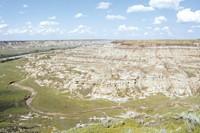Advertisement
Grab your lab coat. Let's get started
Welcome!
Welcome!
Create an account below to get 6 C&EN articles per month, receive newsletters and more - all free.
It seems this is your first time logging in online. Please enter the following information to continue.
As an ACS member you automatically get access to this site. All we need is few more details to create your reading experience.
Not you? Sign in with a different account.
Not you? Sign in with a different account.
ERROR 1
ERROR 1
ERROR 2
ERROR 2
ERROR 2
ERROR 2
ERROR 2
Password and Confirm password must match.
If you have an ACS member number, please enter it here so we can link this account to your membership. (optional)
ERROR 2
ACS values your privacy. By submitting your information, you are gaining access to C&EN and subscribing to our weekly newsletter. We use the information you provide to make your reading experience better, and we will never sell your data to third party members.
Analytical Chemistry
Collagen found in 195 million-year-old dinosaur bone, perhaps
Finding represents the oldest protein fossil discovered so far, but skeptics aren’t convinced by infrared data
by Celia Henry Arnaud
February 1, 2017
| A version of this story appeared in
Volume 95, Issue 6

Until now, the oldest proteins ever found were collagen fragments from an 80 million-year old Brachylophosaurus canadensis dinosaur femur. A new finding claims to have beaten that record by more than 100 million years.
Robert R. Reisz, a paleontologist at the University of Toronto, and coworkers report that they have found collagen in tiny channels of a 195 million-year-old Lufengosaurus dinosaur rib fragment uncovered in Yunnan Province, China (Nat. Commun. 2017, DOI: 10.1038/ncomms14220).
But some scientists aren’t convinced. These skeptics question whether the analysis of the fossil actually points to collagen.
Usually when fossilized bones are analyzed, researchers dissolve the inorganic material and extract the organic material. Reisz and coworkers instead examined the organic material as it sat in the fossil. They looked for collagen in thin, longitudinal slices of bone using synchrotron-derived Fourier transform infrared microspectroscopy.
By analyzing the sample without dissolving the bone, “we can actually identify the source of the collagen in a very direct and precise manner,” Reisz says. “We’re finding that it’s within the vascular spaces of the bone where blood vessels would have been in the living animal.” The putative collagen is located in flat fragments along these vascular canals. Reisz thinks the collagen probably came from the walls of blood vessels rather than the bone itself.
Using Raman microscopy and transmission X-ray microscopy, the researchers also identified α-hematite crystals in the vascular canals. They suspect that this iron-containing mineral was derived from iron-carrying blood proteins such as hemoglobin, myoglobin, and lactoferrin. Reisz thinks the hematite might have played a critical role in preserving the collagen by sequestering it.

But skeptics aren’t sure that the spectroscopic data conclusively identify collagen.
“Collagen is one of the best-studied biomolecules on the planet,” says Mary H. Schweitzer, a paleontologist at North Carolina State University. She previously reported finding traces of collagen in 80 million-year-old dinosaur bones (Science 2009, DOI: 10.1126/science.1165069) and recently reported additional evidence for that finding (J. Proteome Res. 2017, DOI: 10.1021/acs.jproteome.6b00873). “Collagens, particularly collagen type I, the protein that dominates in bone tissues, are easily recognizable.”
The spectra reported by Reisz’s team lack some of the characteristic bands of collagen, says Kathleen Gough, an IR imaging expert at the University of Manitoba. The IR spectrum of collagen was first reported more than 65 years ago, she notes. All proteins exhibit amide bands, which can be seen in the reported spectra of the fossil. But collagen has additional characteristic markers at 1,337; 1,284; 1,240; and 1,204 cm-1, which are hard to discern amid all the other absorptions from the fossil samples.
Analysis of the spectra, Gough says, is also hindered because the team recorded them in a way that can produce unwanted distortions in the absorption bands’ shapes and heights.
Also, Gough notes that the distinctive CH2 and CH3 bands identified in the fossil spectra are typical of lipid membranes or oils rather than of collagen, for which a characteristic CH2 band is not observed.
All of this, Gough says, points to the need for further analyses of the material, such as with polarized light and with IR spectroscopy with higher spatial resolution.
Matthew Collins, who studies ancient proteins at the University of Copenhagen and the University of York, “wants to believe it’s true.” But he also wishes Reisz’s team had used a wider variety of chemical analyses. “Everybody in this field uses their own favorite methods. We need to get lots of experts together and do a 360 analysis” with multiple analytical methods, he says.
Yao-Chang Lee, who led the synchrotron work at the National Synchrotron Radiation Research Center in Taiwan, says the spectra do show the characteristic collagen bands. In particular, the team saw the amide III band, which is found in collagen but not in general proteins. He also notes that because the fossil’s collagen is degraded, polarized light methods might not provide useful information. Also, Lee says, other analysis methods would require chemical treatments, which the team wanted to avoid so they wouldn’t introduce contaminants.
“We’re pushing the envelope,” Reisz says. “It’s a matter of pushing the boundaries of what kinds of organic signals we can get out of fossils.” Eventually, he thinks analysis methods could obtain sequence information for a more confident identification. “Within 10 years, we might be able to,” he says.





Join the conversation
Contact the reporter
Submit a Letter to the Editor for publication
Engage with us on Twitter